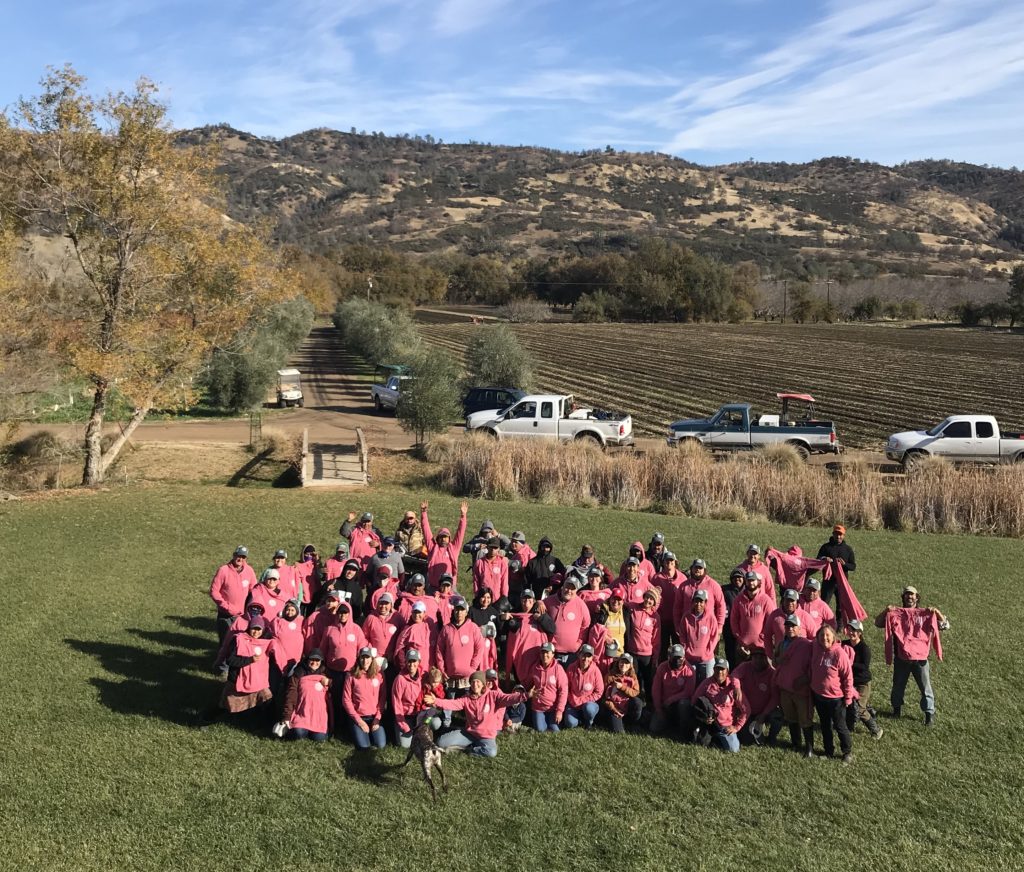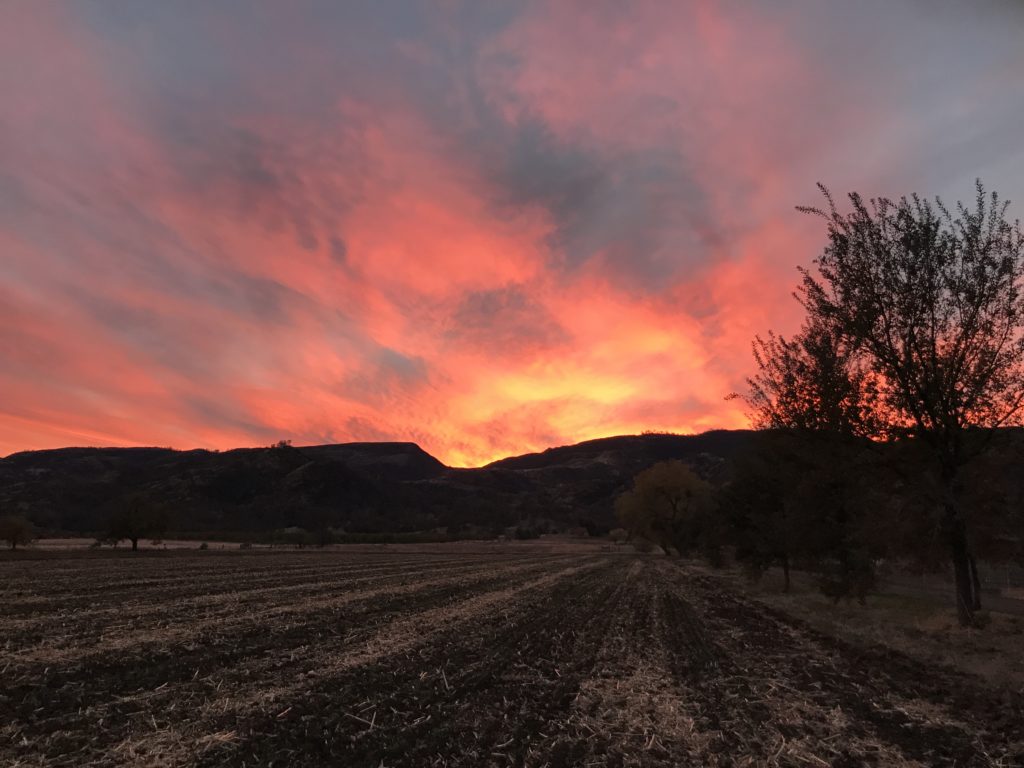
The annual all-farm photo of the year-round crew, minus a few folks, with our new sweatshirts
The cold November has rolled into an early wet December. We are grateful for both and have been reveling in the rain – what a gift! Even though it means this week, as we wrap up the 2022 CSA, farmers markets, and produce sales, we will be slogging crops out of wet fields.
This past year, like all years, has been one of learning and growth. Four decades of experience and observation have created our general guidelines for management and tools to make better holistic decisions. But we are continually learning and accumulating knowledge about the world we observe, the world of microbes that we can’t see, and tools that we can use to grow nutritious food and healthy soil. Our agricultural knowledge evolves as each crop year provides new insight into the working relationships on our farm.
Science is helping us understand the power of the microbial world, a wildly complex, tightly linked world in which we live. In the soil, many of the trillions of microbes exist only in relationship to other microbes and often only in relation to plants that feed them and whom they in turn feed- they can’t be isolated and studied as soil components or parts. We increasingly see that the whole is the whole- its complexity is the near miraculous integration of everything as one. That may well include the hand and intention of us, the farmers who manage that continuum, for example by planting cover crops. Our farm has long focused on fall and winter cover crops; they create pathways for whatever rain we receive to penetrate and sink into our fields, and they feed sugars (carbon) to the incredible community of microbes that symbiotically feed plants the minerals they need to thrive, breaking down what we’ve added this year and in past years to enhance soil carbon and soil organic matter.
Science has revealed that the dust of a place carries the hitchhikers of billions of indigenous microbes, settling on leaf surfaces, in lungs, on skin, or soil surface. We now understand that the microbial world also impacts the working of our own physiological makeup, our gut microbes, and even our emotions. We are not just what we eat, but we are what our microbiome eats – as we are home to trillions of microbes and we are each our own ecosystem influenced by the ecosystems around us.
To farm is to be part of a continuum of care, starting with the history of past hands on the land – stretching back countless generations but also including yesterday’s actions- and looking ahead to what will be taken and added back tomorrow and further out in the future. To farm demands appreciation of ones caring for dynamic relationships within dynamic relationships.
We appreciate that for thousands of years, those who were indigenous to a place were as critical to the workings of an environment as all other parts. The place was of them, as they were of the place- a physiological, spiritual and social integration with a land.
We find ourselves increasingly of this place- modified by its character, its demands, its weather fluctuations, and the very microbial culture that we foster here. We mark 2022 as another year of learning and practicing the continued integration of our personal journeys and the design of a place. We also mark the year with Hannah’s marvelous wedding, the growth of clever grandchildren, and wonderful new and dedicated staff that have assumed Judith’s duties following her retirement. We are even mulling over how to reopen the farm as a place to teach and touch, even how a farm celebration (Hoes Down-like) might be resurrected.
We do these things in a changing world that challenges our farm design, from climatic changes to societal ones, and demands that we respond. Water is key- capturing more when it rains, and making more resilient soil/plant dynamics by adding carbon with cover crops and compost. Labor is key- honoring those who work the fields with living wages and health care. We seek to produce the best food that we can as we deal with the high costs of fuel and insurance. And we seek to provide a safe healthy environment to work, share and support the life above, below, on, and around this place for which we are responsible.
Thank you for another year sharing with and supporting this journey. This is our last week of the CSA and our last week at the Berkeley and Marin Farmers Markets. Our last Palo Alto Market will be on Saturday the 17th. After a rest later this month, we will be re-invigorated for the journey once more, restarting our CSA and markets on January 10th. Have a great holiday season. Your support is very much appreciated. Blessings from all of us to you.
Paul Muller

